If you were in Brisbane in the last month, you may have noticed a large, vibrantly coloured wooden chariot being pulled through the streets of the city.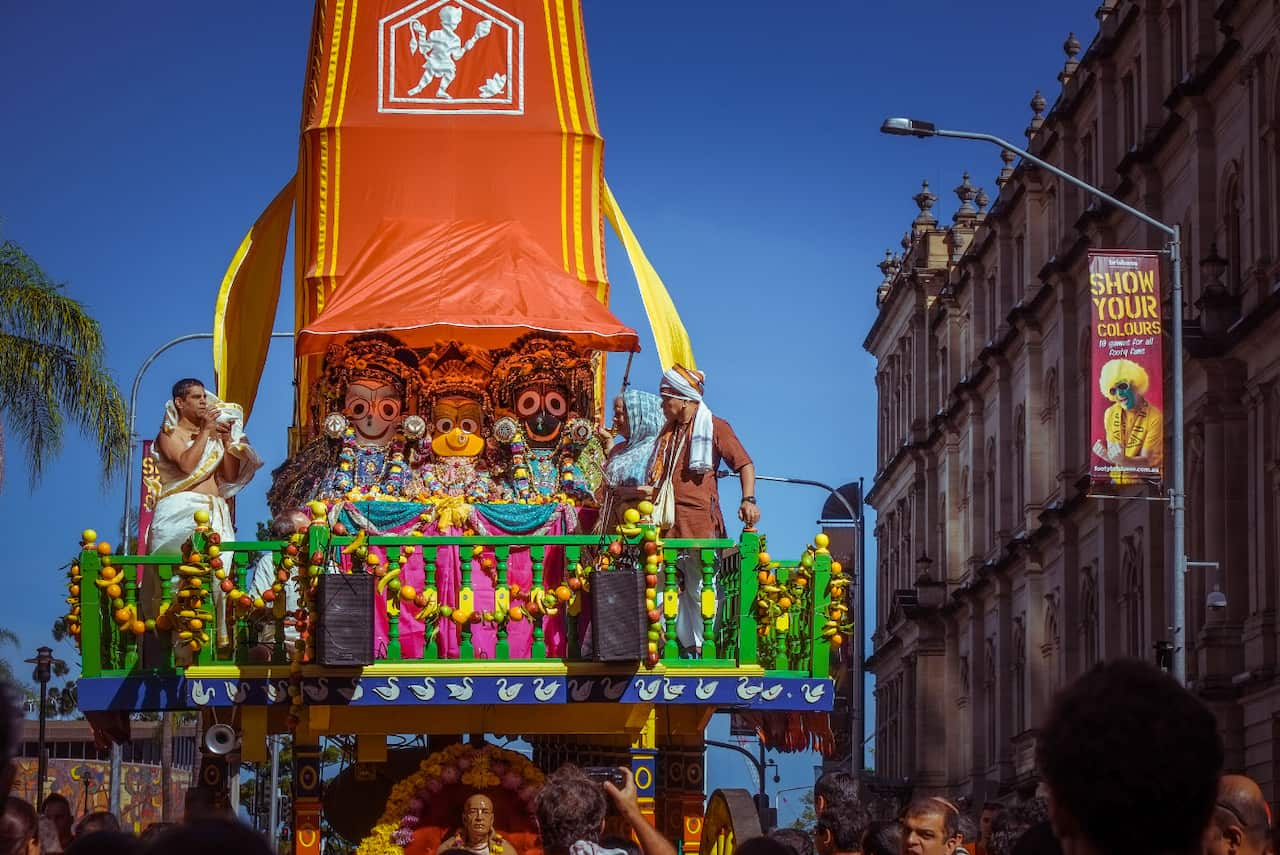 Perhaps you were one of the 5,000-odd people taking their turn pulling the chariot?
Perhaps you were one of the 5,000-odd people taking their turn pulling the chariot?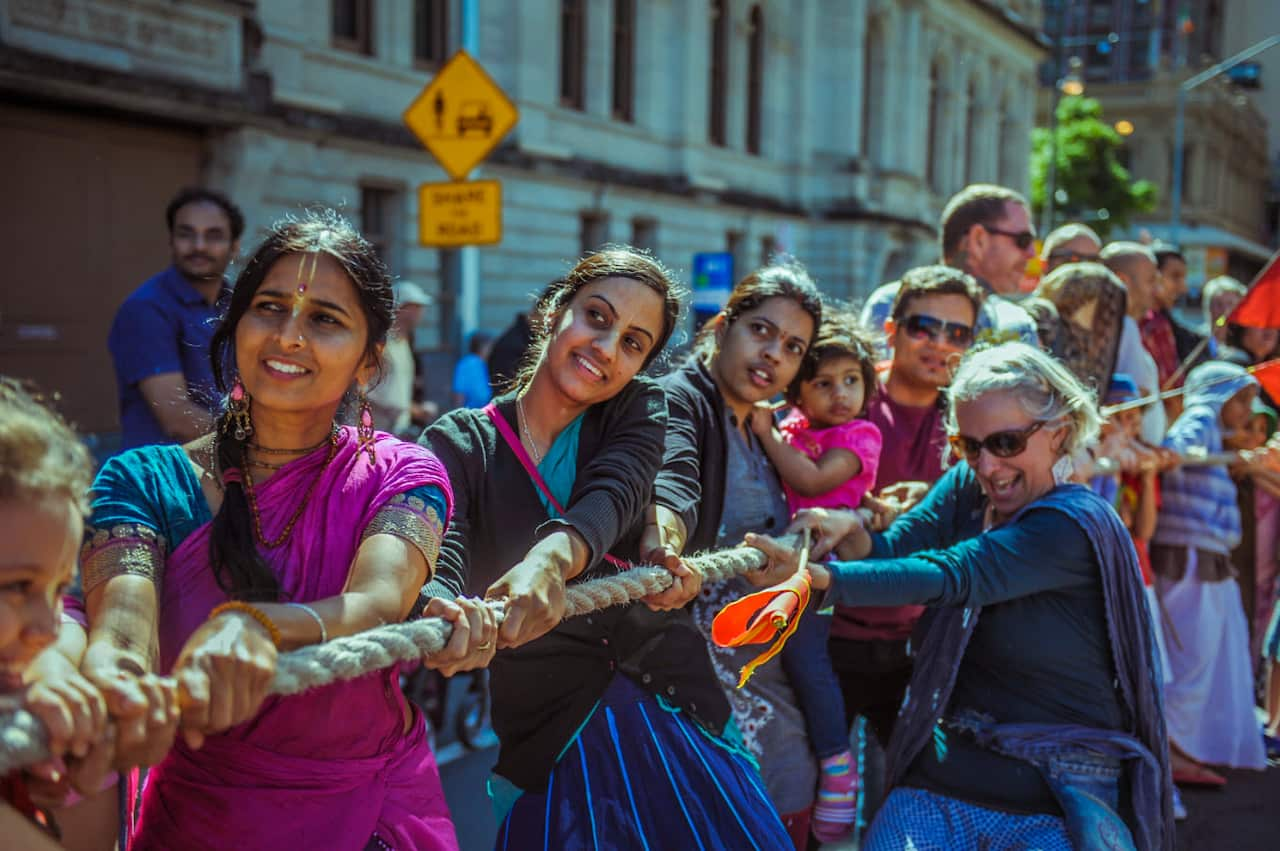 You were most likely one of 3,000 taking part in the free lunch afterwards - the country’s largest free feed, consisting of delicious vegetarian Indian food, courtesy of Govindas restaurant.
You were most likely one of 3,000 taking part in the free lunch afterwards - the country’s largest free feed, consisting of delicious vegetarian Indian food, courtesy of Govindas restaurant.

Spot your deity on the the chariot. Source: Vraja Dhama

Exactly how many tonne is the chariot they're pulling? Six tonne. Source: Vraja Dhama
It was all part of Brisbane’s Festival of Chariots, also known as Ratha Yatra, an event celebrating Hare Krishna culture, community, spirituality, and the joys of sharing a great meal with loved ones.
The festival has its roots in the east coast of Orissa, India, where it first appeared 5000 years ago. It is said that the festival marks the day deities emerge from the temple to grant blessings to all living things. The chariots are for transporting the deities – a line-up which includes Lord Jagannath, lord of the universe – around the city, hence the spectacular decorations, dancing and live music.
If you pull the ropes of the chariot, it’s as if you’re bringing joy and peace and auspiciousness into your life.
Festival co-ordinator Chintan Dgandhi tells SBS that this year’s festival in Brisbane saw close to 5,000 people pulling a six-tonne chariot through the city.
“This is a people-powered festival,” he says. “If you pull the ropes of the chariot, it’s as if you’re bringing joy and peace and auspiciousness into your life. Usually people head into the temple to take blessings, but this is a festival where the lord actually comes out of the temple to bless everyone.”
What began as a sub-continental celebration has since spread around the world, to cities like Moscow, Los Angeles, Auckland, Rome and many more. The first Festival of Chariots celebrated outside India was in San Francisco in 1966, where a truck stood in as a makeshift chariot.
We never really know how many people to expect. We had a team of cooks from Govinda’s on standby.
Jump forward to 2014, when festival organiser Dominik Luczak first launched the event in Brisbane. It’s now one of the city’s premiere cultural events, featuring market stalls, kids’ entertainment, henna and face painting and cultural music and dance performances – all showcasing the vibrancy of the Hare Krishna community. Each year, all festival goers are encouraged to get involved with pulling the chariot through King George Square and beyond.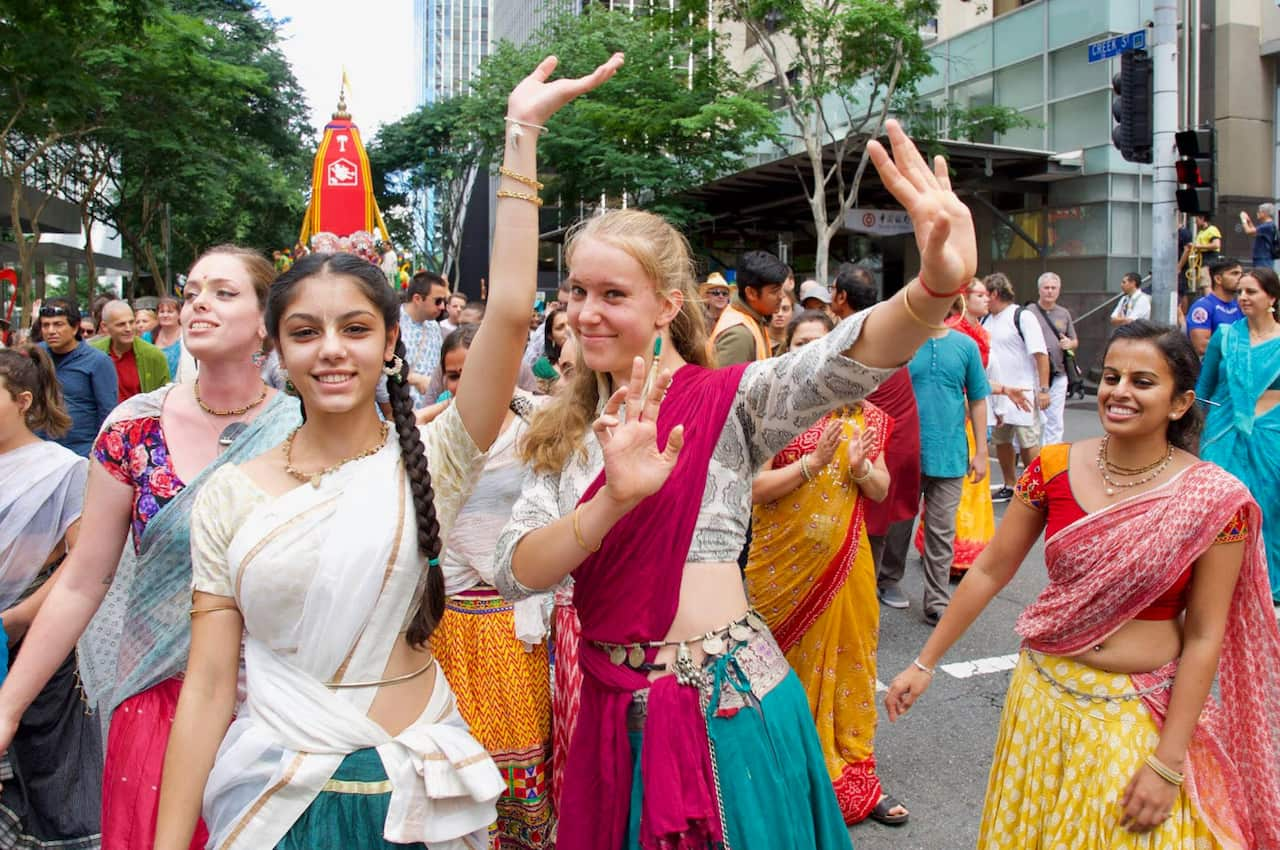 “We want participants to have fun pulling the chariot,” says Luczak. “We want them to see and experience new and exciting things and enjoy the range of cultural activities on offer."
“We want participants to have fun pulling the chariot,” says Luczak. “We want them to see and experience new and exciting things and enjoy the range of cultural activities on offer."

Experience the life, colour, and vibrancy of Hare Krishna and Indian culture. Source: Vraja Dhama
And then, there’s the food.
Paneer and vegetable sabji, (which as Dgandhi explains, is an opulent sort of curry made with cheese), deep-fried vegetable kofta balls with spiced chutney, and semolina pudding with custard for dessert. It was a feast fit for the lord of the universe – and for the many Brisbanites who showed up for lunch.
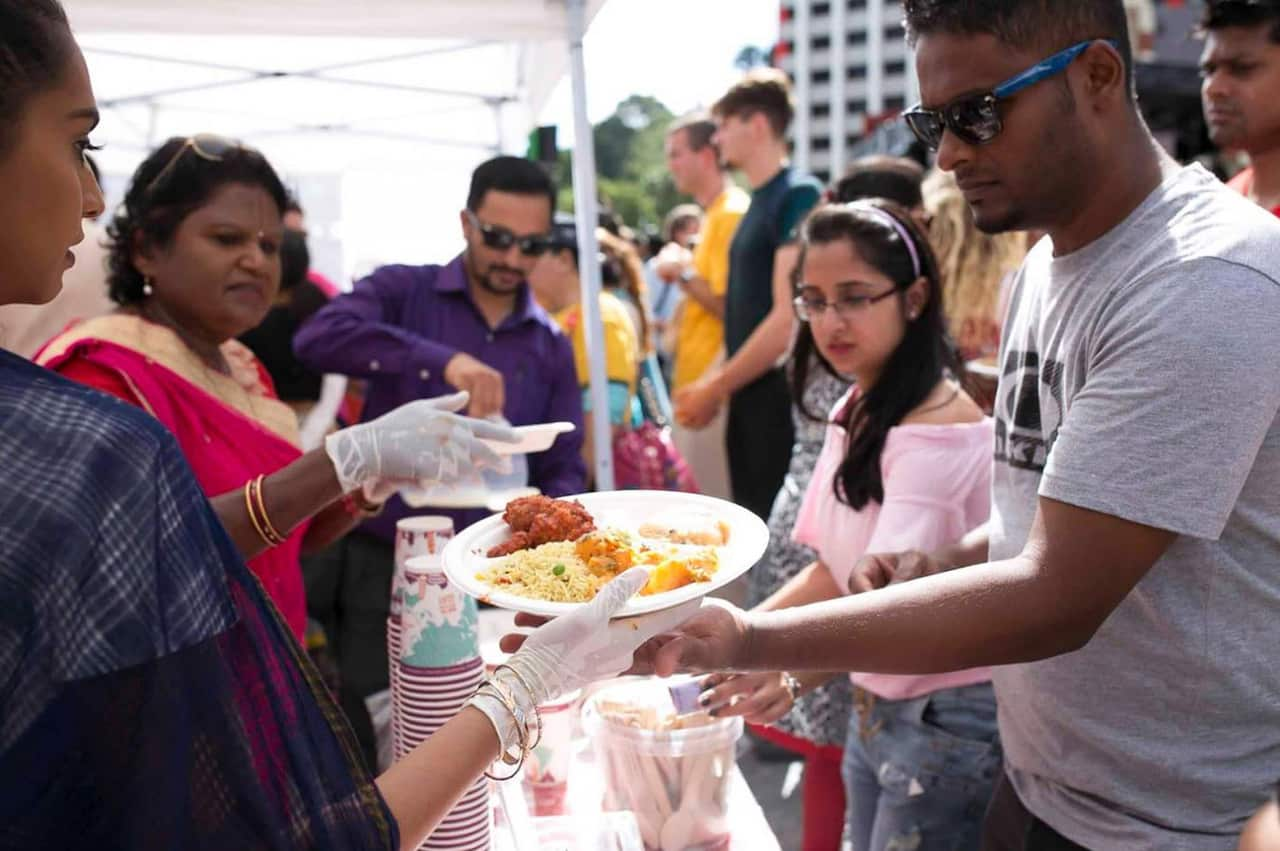
The free lunch was courtesy of Govindas restaurant. Source: Vraja Dhama
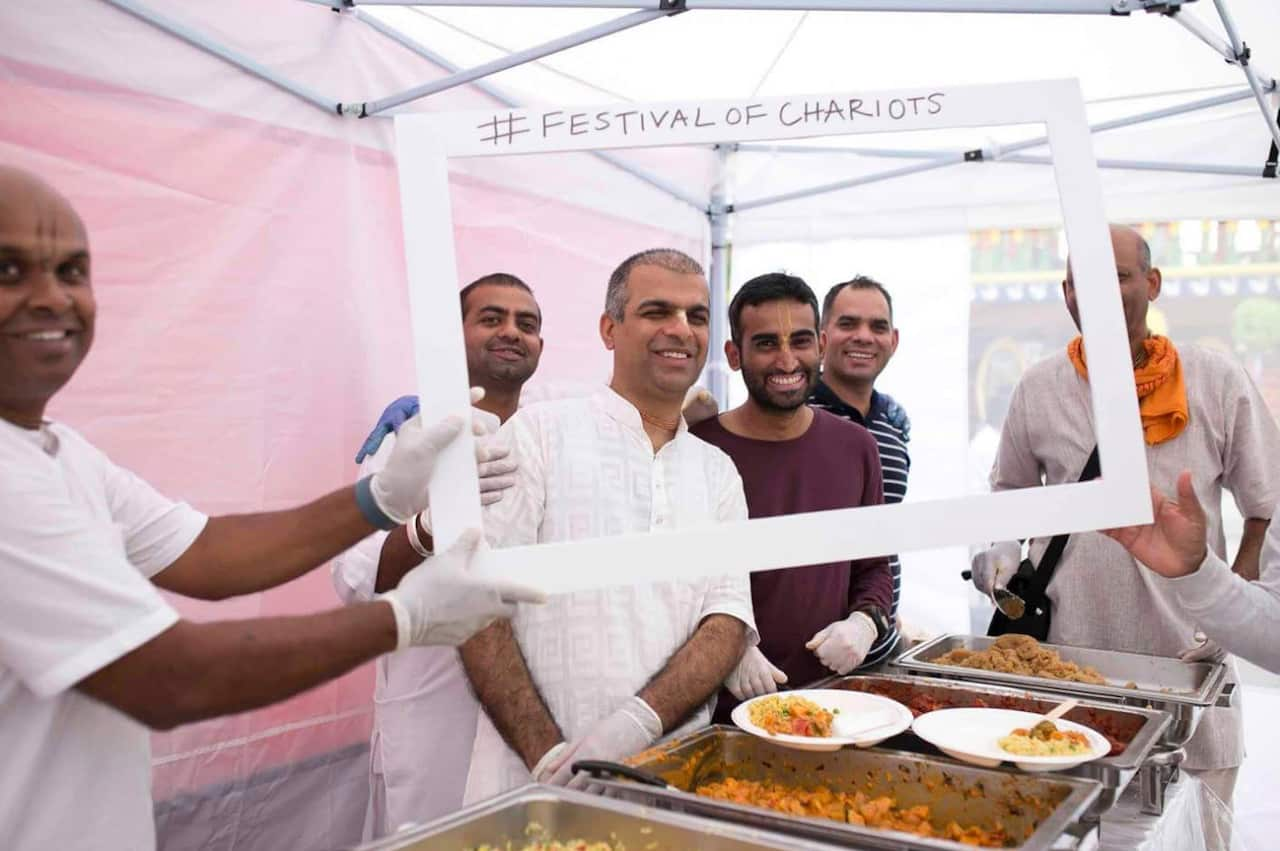
"We handed out 2800-3000 plates of free food." Source: Vraja Dhama
“We’re looking forward to having more people experiencing the life, colour, and vibrancy of Hare Krishna and Indian culture,” Luczak says. “We get more excited every year!”
Share
SBS Food is a 24/7 foodie channel for all Australians, with a focus on simple, authentic and everyday food inspiration from cultures everywhere. NSW stream only. Read more about SBS Food
Have a story or comment? Contact Us




